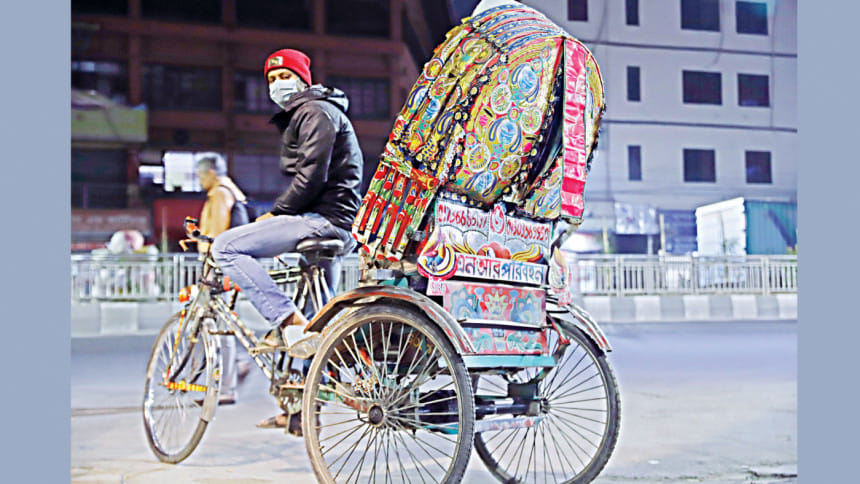Rickshaws now ‘intangible heritage of humanity’

Unesco yesterday inscribed Bangladesh's rickshaws and rickshaw paintings to its list of "intangible cultural heritage of humanity".
The recognition was given at the ongoing 18th session of the Intergovernmental Committee for the Safeguarding of the Intangible Cultural Heritage in Botswana's Kassanne.
Senior Information Officer of the Ministry of Culture Faisal Hasan confirmed it to The Daily Star.
"The rickshaw is a human-propelled transport on three wheels and is a recognised feature of Dhaka and Bangladesh, as a whole. Rickshaw craftsmanship has been highly renowned for its traditional process of fashioning it by hand. In Bangladesh, almost every part of a Rickshaw is decorated and painted," Unesco said in a statement.
"Rickshaws and rickshaw painting are viewed as a key part of the city's [Dhaka's] cultural tradition and a dynamic form of urban folk art, providing inhabitants with a sense of shared identity and continuity," it added.
Apart from rickshaws and Rickshaw paintings, some of the new inscriptions include India's Gujarat's 'garba' dance, Songkran, the traditional Thai New Year festival, hiragasy, a performing art of the Central Highlands of Madagascar, Junkanoo from the Bahamas, among others.
Unesco's list of the intangible cultural heritage of humanity has some 704 elements corresponding to 5 regions and 143 countries.
It includes forms of expression that testify to the diversity of intangible heritage and raise awareness of its importance. By enhancing the viability of communities' cultural practices and know-how, Unesco aims to safeguard the intangible cultural heritage of communities globally.
"Rickshaws and rickshaw paintings" is Bangladesh's fifth entry in the list.
The entries are Jamdani and Shital Pati weaving industries, baul songs and Mongol Shobhajatra.

 For all latest news, follow The Daily Star's Google News channel.
For all latest news, follow The Daily Star's Google News channel. 



Comments